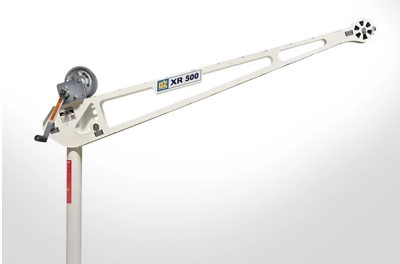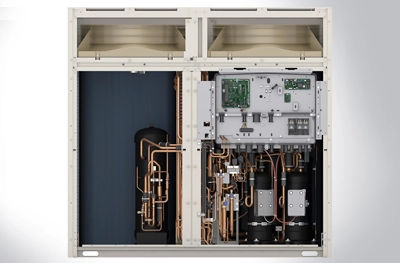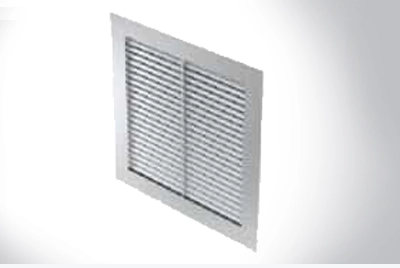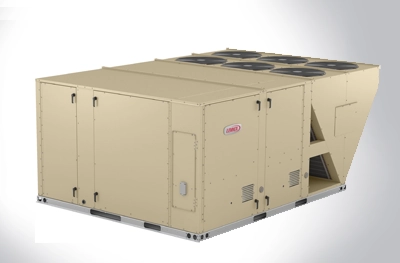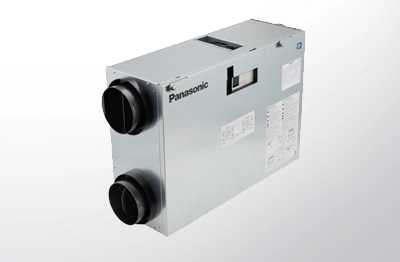Move to the Cloud, Get Paid Faster, Go Mobile, Begin Barcoding and Get Control of Your Fleet with GPS.
If you are in the midst of planning your capital-investment budget, consider how you can save money with technology. Many options for improving efficiency and cutting costs exist. Which are best for your business? Here are five to consider.
The Cloud: Always-on IT support and an end to ongoing upgrades.
Rumors suggest that Cloud computing is nothing more than a catchy buzzword with little factual backup, but many small businesses have reaped the benefits of using the Cloud in their day-to-day operations. The proof is in decreased costs, increased efficiency, and total mobility. Traditional businesses are still tied down to a local server that stores their software and data; businesses using the Cloud have freed themselves by using applications that can be accessed from anywhere, anytime, on any device.
So, how can the Cloud help your business?
In an organization where most of the budget is spent on obtaining the best tools and employees to get the job done, technology investment is often put off due to its expensive nature. Also, implementing new technology is often a time-consuming task, and understandably so. The traditional route involves installing an expensive server, purchasing a specific set of mobile units, upgrading your computer, and hiring a costly IT professional to set it all up. So, you empty your wallet with no guarantee that your investment will be returned, and in five years the process will start over.
Does this sound familiar? The Cloud offers an alternative. With Cloud-based software such as Service Max, Connect2Field, and Google Maps Coordinate, you will get the same results — if not better results — than you will with expensive software. These apps will streamline your paperwork and improve team collaboration and communication for less. All you need is a computer in the office and a mobile device (tablet, smart phone, or laptop) for each team or technician.
Hard-to-reach and hard-to-afford IT expertise is a thing of the past with the Cloud. According to a study by Microsoft Corp., 98% of small businesses say technology is important for the success of their organization; however, 42% admit to not having an IT department. When you move to the Cloud, the Cloud provider becomes the IT department. A simple form is all that’s needed to sign up, and support is an email or phone call away. Such support is included in — not additional to — your monthly licensing cost. Cloud computing relieves you from installing, maintaining, and upgrading software and hardware. All you do is log in and log out, or simply pick up a phone. In a mobile business that relies on fieldwork, your IT support should be available when it’s needed — not when it’s convenient — whether in the middle of a snowstorm or at the height of summer.
The Cloud not only cuts the cost of maintaining a server, but also eliminates the expense associated with replacing PCs every three to five years. All the data and applications are stored in the Cloud and available through Internet access, regardless of the age, power, or cost of the computer. They remain untouched by natural disasters, faulty machines, or human error. You can run your computer or smart phone into the ground without worrying about losing precious data; simply log onto the next computer, and instantly continue where you left off.
Adaptability is key for small businesses. When the business and physical climates change, businesses need to be prepared to hire extra team members, increase storage space, or even purchase more equipment (right before the summer heat wave hits and a rash of air conditioner breakdowns occur). With the Cloud, you no longer have to pay for an expensive software solution that may only be used by five team members at times. It does not cost to add or remove storage, users, or features; the Cloud grows with your business.
By moving to the Cloud, IT costs are cut dramatically — but more importantly, your business is gaining the opportunity to increase collaboration and productivity, and to grow with technology instead of struggling to keep afloat in a world where technology is constantly surpassing itself. According to a study done by Forbes (find it on GetApp, www.getapp.com) of the businesses already using the Cloud, 73% reported a reduction in their IT costs, 57% reported an increase in security, and 58% stated that moving to the Cloud provided better control of their data. Cut your costs, grow your business, and find your Cloud today.
How many more reasons do you need to move to the Cloud?
— Contributed by Siamak Farah, who is the founder and CEO of InfoStreet, www.infostreet.com, a leading provider of IT & Productivity Software as a Service (SaaS).
2. E-Pay Systems: Get paid faster.
According to an Oct. 12 report by CNET writer Marguerite Reardon, “Analysts say that an explosion in the mobile payments market is just around the corner. In a recent report from eMarketer, which looked at projections from a number of high-profile market research firms including Gartner and Juniper Research, the firm said that last year the U.S. mobile payments comprised 44.5% of the market. The user base has been growing consistantly for years and is only expected to get bigger.
Have you considered starting to use a mobile payment system? Getting payment for jobs immediately upon completion can save money by reducing back-office expenses for paper billing, and it improves cash flow. It also reduces the need for collections on overdue payments.
There are dozens of companies in this space and it continues to grow, including traditional financial institutions such as U.S. Bank and PayPal; as well as new names, such as PayAnywhere, that are independent or affiliated with banks and/or merchant networks.
As for the assurance of paper that some customers require, some mobile payments systems come with the option of using a mini-printer.
— HVACR Business Staff
3. Go Mobile: Get rid of paper with electronic, mobile forms.
Guy Clermont Jr. of Guy Clermont Heating & Plumbing estimated the cost of printing forms, duplicate data entry back at the office and wasted fuel for unnecessary trips back to the office for truck inventory was costing him around $2,000 a year per field technician, with five people in the field. He decided to try a paperless system and looked at ProntoForms, a mobile-based business management solution for HVAC contractors.
“I knew this was a tool that would help me meet my goal of eliminating paper from my field teams,” Clermont said. “Equally important to saving time and money was organization. Paper forms were driving me crazy — too many lost forms to duplicate and manually re-enter back at the office, and many of them with missing information.”
Clermont said he considered using individual mobile apps for the various business forms his teams used, but he wanted something that he could customize and adjust to his business process and export data back to Quickbooks.
“We have developed a business system unique to us — our work orders and check lists are different than other companies — this has evolved from decades of experience. We get all of our forms on a smart phone — not someone else’s forms. Checklists, work orders and even taking pictures of a completed job or capturing a customer signature. This system makes us work smarter.”
The cost of ProntoForms is $19.95 a month per field worker. Compared to all the savings generated, it’s now one of the most effective service tools in the company’s toolbox.
— Contributed by ProntoForms, www.prontoforms.com, a provider of electronic mobile business forms for the HVAC industry.
4. Barcoding: Reduce inventory and free up cash.
According to HVACR Business financial columnist, consultant and author Ruth King, using barcodes to track your inventory of parts and equipment is one of the best ways to free up cash. According to King, barcoding is probably right for your company if:
• You track your inventory but are losing tens of thousands of dollars each year.
• Your company has grown to five trucks or more, and you track inventory.
• It’s taking more and more time to count inventory, and it is tying up more of your company’s precious cash.
• Your office personnel have a hard time keeping up with the number of service tickets and job-cost sheets.
So what could barcoding do for your company? According to King:
• You’ll know what inventory you have on hand at all times.
• You’ll know where that inventory is (in the warehouse, on a truck, etc.)
• You’ll be able to receive, store, and move inventory on to trucks and off of trucks quickly.
• Technicians won’t have to write as much. They use a wand or simply put the barcode sticker on their paperwork.
• There will be fewer mistakes. An office person would have no trouble reading a barcode, but they could have trouble reading field personnel’s handwriting.
• You’ll have pertinent, up-to-date reports about stock levels, usage, and reorder quantities for all parts.
• Counting inventory will be much easier and quicker.
— HVACR Business Staff
5. GPS: Reduce fleet costs and improve productivity.
The HVACR industry has been using GPS technology to save money for at least a decade, but reviewing how these systems save money is worth it because if you aren’t getting the savings you want, talk to your provider or another about how to become even more efficient with GPS. Here are the most common ways GPS systems save money:
Reduced fuel costs: GPS technology will reduce the amount of money spent on fuel in a number of ways, the first being limiting speeding and idling with instant alerts and reports that can notify your techs to “slow down” or “shut off the truck.” Additionally, eliminate unauthorized usage by determining when vehicles are used for non-company-related business, or prove compliance; proactively assign the best route to a vehicle or vehicles via Garmin; and review fuel card reporting on all fuel card transactions to help identify fuel fraud.
Improved productivity: Know where all of your vehicles are at all times and dispatch more efficiently by quickly and accurately ensuring the right person is sent to each job. The ability to monitor and manage the amount of time it takes a tech to arrive at a job site and the amount of time spent there will increase efficiency and productivity, equating to completing more jobs per day, which will directly increase any company’s bottom line.
Reduced labor costs: GPS tracking technology allows you to know exactly when your drivers start their shifts for the day, where they are, how many stops they made, and what time they completed their jobs. Taking the long way home to get some overtime, heading home for a long lunch or nap, and falsifying hours are all things of the past. Reducing overtime pay leads to more profit for your company and less strain on an already tight budget.
Reduced maintenance costs: Diagnostic-capable GPS tracking devices combine GPS tracking with diagnostic measurements, alerts, and fuel consumption data. GPS technology can also alert you to upcoming/overdue maintenance based on your exact schedule. Breakdowns are costly due to lost business, as well as time wasted getting the vehicle fixed, and paying your tech for the unproductive time. Having vehicle diagnostic data will also prevent you from paying for any unnecessary repairs.
More customers: GPS technology will also improve your customer service. You will be able to respond quickly to customer emergencies, easily give estimated time-of-arrival information, serve more customers in a day, and confirm job completion. These additional customer service features will undoubtedly help to retain customers and gain new business based on referrals. ν
— Contributed by Ryan Driscoll, at GPS Insight, a GPS systems provider.

